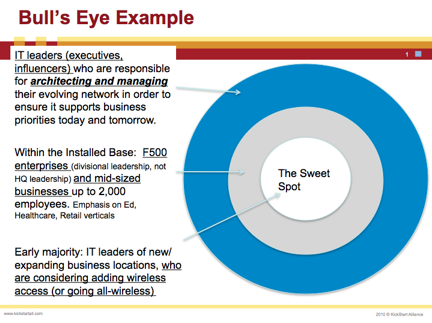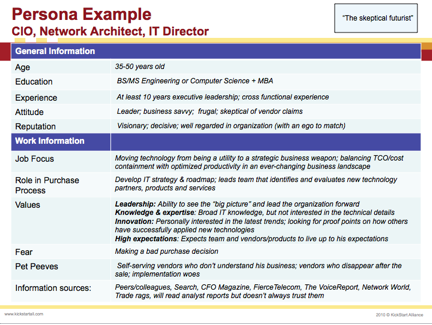The time-starved buyer needs to be particularly nurtured, and the rules are getting “snappy” for marketers to message quickly and efficiently.
Recently we interviewed sales strategist Jill Konrath about her new number Amazon sales book, “
SNAP Selling: Speed Up Sales & Win More Business with Today's Frazzled Customers.”
Konrath’s first book, “Selling to Big Companies,”
was selected
a "must read" by
Fortune magazine. We caught up with Konrath for more details how customers think and the “Buyer’s Matrix.”
DemandGen Report: SNAP Selling offers 4 SNAP rules to effectively improve business, which have been drawn from your years of selling experience. Can you briefly describe them for the DemandGen Report audience?
Jill Konrath: Today's crazy-busy prospects evaluate every single interaction with salespeople by asking
these four questions:
Is this relevant? How urgent is it? Does this person provide value? And, will it take lots of effort?
If the seller adequately addresses these concerns, the conversation continues and the sale advances. If not, they get deleted and opportunities get derailed. That's why it's imperative to always follow these new SNAP rules of selling.
Rule 1: Keep It Simple
Complexity grinds busy people to a screeching halt, so ensure maximum simplicity in everything you do. When you keep it simple, you make it easier for them to buy from you.
Rule 2: Be iNvaluable
People want to work with sellers who “know their stuff” and bring them fresh ideas on a regular basis. Today it's essential to turn yourself into the competitive differentiator.
Rule 3: Always Align
This is all about relevance and risk. When you're aligned with their critical business objectives and core beliefs, clients want to work with you.
Rule 4: Raise Priorities
With your prospects constantly changing priorities, you need to be alert to what's going on in your prospect's organization and shift your approach to keep top of mind.
DGR: In “SNAP Selling,” you emphasize that “sales is an outcome, not a goal,” and that sellers must take the proper steps to finalize a deal. In today's economy, how important is it for the seller to abide by this statement to avoid rushing a prospective buyer?
Konrath: Prospects can smell self-serving salespeople a mile away. They're the ones who don't understand much about their business, spend a lot of time talking about their products/services, and push to get an order as quickly as possible.
Funny thing is, these salespeople don't even realize that they're doing anything differently from their more successful colleagues. Yet they have a much more difficult time setting up meetings and an even tougher time getting a second meeting.
Here's the deal. When sellers rush to closure, prospect's feel like their decision-making process has been violated. They need ideas and insights on how other companies address the same challenges the face. They need to assess the value of changing from the status quo. They need to determine if it's worth the effort to get buy-in from their colleagues, disrupt the workflow, and handle the obstacles they're sure to run into. They need guidance on how to get this to happen fast and minimize disruption along the way.
Sellers who take time to do this create personal value. They become integral to the decision. People want to work with them. And, as a result, they get the business.
DGR: “SNAP Selling” emphasizes the importance of “getting inside your customer's head" and that having product, service or solution knowledge is no longer sufficient to get the sale. Could you break down the “Buyer's Matrix” and the steps to effectively get inside customers minds?
Konrath: First of all, let me state unequivocally that very few companies have any sustainable competitive advantage. They may think they do, but prospects don't believe it. They can easily find numerous "comparable" offerings with a simple Google search.
What this essentially boils down to then is that the seller him/herself has become the key differentiator.
Their ability to communicate their expertise, ideas and insights ultimately becomes a primary decision factor.
The Buyer's Matrix is a tool I developed to ensure that salespeople knew the "essential" prospect knowledge required to do their jobs well. It covers their prospect's roles and responsibilities, objectives, strategic initiatives, obstacles and challenges, the status quo relevant to their offering, and reasons for change.
Once a seller understands this, they have a better concept of their true value proposition, the messaging they can use, the questions they should ask and more.
But to extend this even further, they can do what I call a "mind meld,” which essentially enables them to actually see and hear their own approaches, presentations and more from their customer's point of view. This enables them to see any flaws or glitches in their strategy before they meet with customer — and make adjustments to increase their effectiveness.
DGR: In chapter 8, “Getting in the Game,” you provide the reader with email and voicemail samples of “less-than-perfect” messages that all marketers are likely guilty of leaving customers or potential clients. How can marketers impress a client/customer with an effective email/voicemail while straying from self-promoting lingo?
Konrath: The first thing they need to get rid of is all "marketing" speak. By this, I mean self-promoting puffery (leading, unique, innovating, premier); technical trip (next-gen, robust, world class); and creative crap (outside the box, dramatic, strategic). These words cause messages to get deleted.
Then, they need to stop sounding like a gracious, consultative rep who would love to meet with them to learn how the company is handling their needs and share a bit about their offering.
To impress today's prospects, each message must convey three things:
1. Establish credibility: by referencing a referral or showing that you've invested time understanding their business or industry.
2. Pique curiosity: by sharing a strong value proposition, ideas to improve their business, information that would be of value.
3. Collegial status: by sounding as if you're a busy person, with lots to offer and your time is valuable too.
When sellers change their messaging, they can transform their ability to get their foot in the door. But it requires a radical rethinking of what they're doing.
DGR: In chapter 20, “Invaluable: Become the Expert They Can't Live Without,” you emphasize that it's really not about the product but about the person selling the product. Besides demonstrating extensive knowledge of the subject, how can marketers stand out to clients and customers?
Konrath: Being an invaluable resource is definitely a recurring theme in “SNAP Selling.” The reality of it is that there are so many ways a person can become the go-to resource. Here are just a few:
• Focus all your attention on helping your customers achieve their desired objectives;
• Challenge your prospect's thinking; expand their ideas of what's possible;
• Share with them how other similar businesses are addressing the same challenges they face;
• Bring them synthesized information on relevant industry trends;
• Help them understand the impact of continuing with the status quo.
Also, I believe that everyone has unique talents and interests that they bring to their client relationships. Some people are great at building alliances. Others really get into processes, while still others are incredibly creative.
The ultimate goal is to become invaluable in a way that leverages your personal strengths.
For more of Jill’s thoughts on “SNAP Selling,” register for the upcoming webinar, “Using Content To Establish Sales Credibilty,” brought to you by Demand Creation Specialists. You’ll hear more from Konrath on how successful sales executives can be “invaluable” by using relevant content and thought leadership to sell value and “become the expert clients can’t live without.”
August 12, 2010 1:00- 2:00 p.m EDT - Register Here
To download two free chapters of “SNAP Selling,” visit www.snapselling.com. DemandGen Report readers can obtain a free copy of the Buyer's Matrix by signing up at www.snapselling.com.














